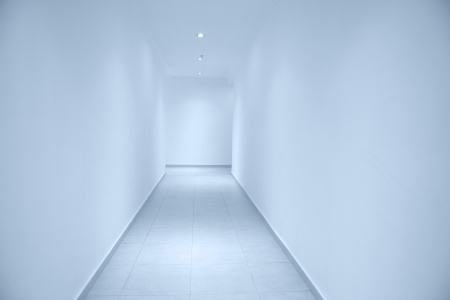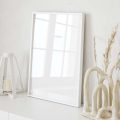Embracing Natural Light in Compact Spaces
Maximising daylight is a cornerstone of making British studio flats feel open, airy, and welcoming—especially when working within the unique character of period properties. Many UK studio flats are found within Victorian or Edwardian buildings, often boasting beautiful sash windows and original cornicing. The challenge lies in enhancing the flow of natural light without compromising these cherished heritage elements. Start by ensuring that classic sash windows are kept unobstructed and meticulously maintained; their slender frames are not only an architectural delight but also allow generous daylight to flood into compact rooms. Consider using sheer or lightweight window dressings in neutral tones to amplify this effect while maintaining privacy—a nod to both British practicality and understated style.
To further brighten interiors, employ reflective surfaces with intention. Strategically placed mirrors, particularly those with vintage-inspired frames, can bounce sunlight deeper into the space and create the illusion of expansiveness. Glass-topped tables and metallic accents—such as brass or copper, which echo traditional British design motifs—offer subtle yet effective ways to scatter light. For walls, select paint finishes with a gentle sheen rather than high-gloss, allowing for soft diffusion that complements period detailing. These thoughtful choices respect the original fabric of the flat while leveraging every opportunity to make small spaces feel luminous and inviting.
2. Making the Most of Space: British Ingenuity in Small Homes
In the context of British studio flats, maximising every inch of space has become an art form, rooted deeply in the UK’s history of compact urban living and resourcefulness. The classic British approach to small-space design draws inspiration from periods when ‘making do and mending’ was not just a mantra but a way of life, particularly during wartime rationing and post-war reconstruction. This ethos translates into clever, space-saving solutions that respect period features while catering to modern needs.
Built-in Joinery: A Timeless Solution
One hallmark of British interior design is bespoke joinery—custom-built shelves, wardrobes, and window seats that fit seamlessly within quirky layouts or alcoves typical of Victorian and Edwardian conversions. Not only do these elements preserve heritage details such as cornicing or sash windows, but they also create additional storage without compromising floor space.
Multifunctional Furniture: Classic Meets Contemporary
British ingenuity is further seen in multifunctional furniture, echoing the tradition of adaptability. Think ottomans doubling as storage chests, drop-leaf tables for dining or work, and sofa beds ready to transform a sitting area into a guest room overnight. These pieces often blend classic craftsmanship with modern utility—perfectly at home in a period flat where every item must earn its place.
The ‘Make Do and Mend’ Tradition
This quintessentially British philosophy champions repurposing existing pieces or upcycling vintage finds—a sustainable approach that both celebrates the past and suits contemporary eco-consciousness. Whether it’s restoring an old trunk as a coffee table or updating inherited furniture with new upholstery, these practices ensure that heritage character remains central to even the smallest homes.
Space-Saving Solutions at a Glance
| Solution | Heritage Connection | Modern Benefit |
|---|---|---|
| Bespoke Joinery | Tailored cabinetry in awkward period spaces | Maximises storage without cluttering rooms |
| Fold-away Furniture | Echoes historic campaign furniture | Transforms function without permanent bulk |
| Repurposed Vintage Pieces | Make do and mend wartime ethos | Sustainable & unique character additions |
This unique blend of heritage and innovation is what sets British studio flats apart: every corner tells a story, every solution honours tradition while adapting gracefully to 21st-century living.

3. Showcasing Period Details and Original Features
When it comes to studio flats, especially those set within period buildings across the UK, original architectural features are often what set these homes apart. Whether you’re renting a Victorian conversion in Hackney or own a Georgian pied-à-terre in Bath, highlighting cherished details such as ornate cornicing, decorative fireplaces, and original timber floorboards can instantly elevate your space while respecting its heritage.
Restoring and Revealing Character
The first step is to gently restore rather than conceal. Years of paint may hide intricate mouldings or ceiling roses; a careful professional clean or sympathetic repaint in soft, heritage-inspired tones will allow these flourishes to shine. Where possible, expose original floorboards—sanding and finishing them in a natural stain not only celebrates their craftsmanship but also enhances the sense of light and space so prized in compact studios.
Fireplaces: Focal Points with Flair
Even if no longer functional, period fireplaces serve as a focal point. Instead of covering them up, consider styling the mantel with curated objects—think vintage books, potted greenery, or locally sourced ceramics—to blend old-world charm with contemporary living. If regulations permit, adding a statement mirror above can amplify both light and the grandeur of high ceilings typical in British period flats.
Blending Old and New Thoughtfully
The key lies in balance. Retain cornices and skirting boards where possible but pair them with streamlined furniture or minimalist lighting for contrast. Opt for neutral wall colours to let architectural details stand out without competing for attention. In rented properties, temporary solutions like freestanding shelving or removable wallpaper can highlight period alcoves or panelling without breaching tenancy agreements. Through sensitive restoration and clever styling, these characterful elements remain at the heart of your studio—bridging past and present seamlessly.
4. Colour and Texture: A Heritage Palette
When enhancing period features in studio flats, the choice of colour and texture is pivotal to both celebrating heritage and maximising light and space. In the UK, a wealth of historic paint colours, wallpapers, and textiles offer inspiration for those wishing to retain character while ensuring that compact studios remain bright and inviting.
Historic Paint Colours in British Interiors
Traditionally, British interiors have favoured an understated yet sophisticated palette. Soft off-whites, muted greens, dusky pinks, and gentle blues were commonly found in Georgian, Victorian, and Edwardian homes. These hues not only reflect natural light but also provide a subtle backdrop for ornate cornicing or original fireplaces. By selecting heritage paints such as Farrow & Ball’s “Cornforth White” or Little Greene’s “Celestial Blue”, one can echo historical authenticity while visually enlarging compact spaces.
Popular Heritage Paint Colours
| Era | Colour Name/Type | Effect on Space |
|---|---|---|
| Georgian | Pale Sage Green, Stone White | Crisp, reflective; enhances daylight; serene backdrop |
| Victorian | Dove Grey, Deep Navy, Burgundy Red | Adds depth; creates focal points; pairs well with gilded trims |
| Edwardian | Powder Blue, Blush Pink | Lightens rooms; softens architectural lines; romantic feel |
Wallpaper: Patterns from the Past
Wallpapers were once a staple of British interiors, with intricate florals, damasks, and Arts & Crafts motifs lending visual richness to even the smallest room. When used thoughtfully in studio flats—perhaps as a feature wall behind a bed or around a chimney breast—heritage patterns add character without overwhelming the space. Opt for lighter backgrounds or metallic highlights to further reflect natural light.
Textiles: Layering Texture for Warmth and Light
Bespoke textiles are another way to introduce heritage charm. In Britain, woollen throws, linen cushions, and velvet drapes have long been prized for their tactile appeal. For studio flats aiming to enhance both light and comfort:
- Linen: Airy and naturally reflective, ideal for curtains or table covers.
- Cotton Chintz: Traditional floral prints brighten up upholstery or scatter cushions.
- Velvet: Adds luxury as an accent—consider a small footstool or cushion to avoid absorbing too much light.
- Tweed: Nods to British rural heritage; best used sparingly in smaller spaces.
The Balance of Colour and Texture in Studio Flats
The key lies in layering these elements without clutter. Choose one or two heritage shades as your base palette, complement them with subtle wallpaper accents, and finish with tactile textiles that invite touch but don’t darken the room. This approach honours Britain’s rich decorative history while keeping modern studio flats feeling airy and open.
5. Sympathetic Modern Additions
While the allure of period studio flats in the UK lies in their rich history and distinctive features, modern living inevitably demands a degree of adaptation. The key is to introduce contemporary elements—lighting, technology, storage—with a sensitive hand, ensuring they sit harmoniously alongside original details rather than competing with them.
Integrating Lighting Thoughtfully
Lighting is both functional and transformative, and in a British context, natural daylight is often precious. Opt for understated fittings such as brass wall sconces or pendant lights with heritage-inspired designs. Consider adjustable LED spotlights to discreetly highlight cornicing or exposed brickwork without introducing overtly modern shapes or finishes that could jar against Georgian or Victorian bones.
Technology: Discreet, Not Dominant
The integration of smart home technology need not disrupt period charm. Wireless systems, concealed speakers, and slimline thermostats can be tucked away within alcoves or behind panelling. For those who value authenticity, seek out switches and sockets in period-appropriate finishes—think Bakelite-style toggles or antique brass plates—to maintain visual consistency throughout the flat.
Clever Storage Solutions
Maximising space is essential in studio flats, yet bulky wardrobes or shelving can easily dominate a room’s character. Choose built-in cabinetry painted to match existing woodwork, or opt for open shelving that echoes traditional joinery styles. Using under-bed drawers or utilising recesses for bespoke cupboards allows you to keep clutter at bay while respecting original skirting and architraves.
Ultimately, the goal is to enhance everyday functionality without overshadowing the craftsmanship and historical resonance that make period studio flats so special. By taking cues from the property’s architectural language and prioritising subtlety, it’s possible to enjoy 21st-century comfort while honouring the enduring spirit of Britain’s built heritage.
6. Heritage Inspirations: Iconic British Studio Flats
When seeking inspiration for enhancing period features in studio flats, it is invaluable to look towards the iconic examples that dot Britain’s architectural landscape, especially in London where heritage and modernity entwine. Across the capital, several historic conversions showcase how light, space, and heritage can be harmoniously balanced within compact living spaces. Notably, the transformation of Victorian mansion blocks in Kensington and Bloomsbury offers a masterclass in retaining original cornices, sash windows, and ornate fireplaces while introducing subtle lighting schemes and clever spatial zoning. These developments often employ pale paint palettes and judiciously placed mirrors to amplify natural light—techniques easily adapted to any studio flat.
The Barbican Estate: Brutalism Meets Modern Living
The Barbican Estate is an exemplar of mid-century modern heritage reimagined for contemporary lifestyles. Its studio flats are flooded with daylight thanks to vast windows and open-plan layouts, yet period features such as exposed concrete and parquet flooring are meticulously preserved. The interplay between raw materials and thoughtful interior design provides inspiration for blending old with new in even the smallest studios.
Warehouse Conversions: Industrial Chic with Edwardian Roots
East London’s warehouse conversions—such as those found in Clerkenwell or Shoreditch—highlight another approach. Here, original brickwork, timber beams, and cast-iron columns are celebrated rather than concealed. Designers use bespoke joinery and transparent partitions to carve out defined zones without compromising the sense of openness or light. This ethos encourages studio dwellers to embrace structural quirks as unique character assets.
Cultural Continuity: Adapting Heritage for Modern Needs
Whether drawing on the grandeur of a Georgian townhouse conversion or the minimalist elegance of post-war estates, successful studio flats in Britain show that period features need not be sacrificed for functionality. Instead, they serve as a canvas for innovation—where layered lighting, multi-functional furniture, and sympathetic restoration work together to enhance both practicality and charm. By referencing these real-life precedents, homeowners can confidently navigate the balance between preserving history and embracing modern living standards within their own compact heritage spaces.


